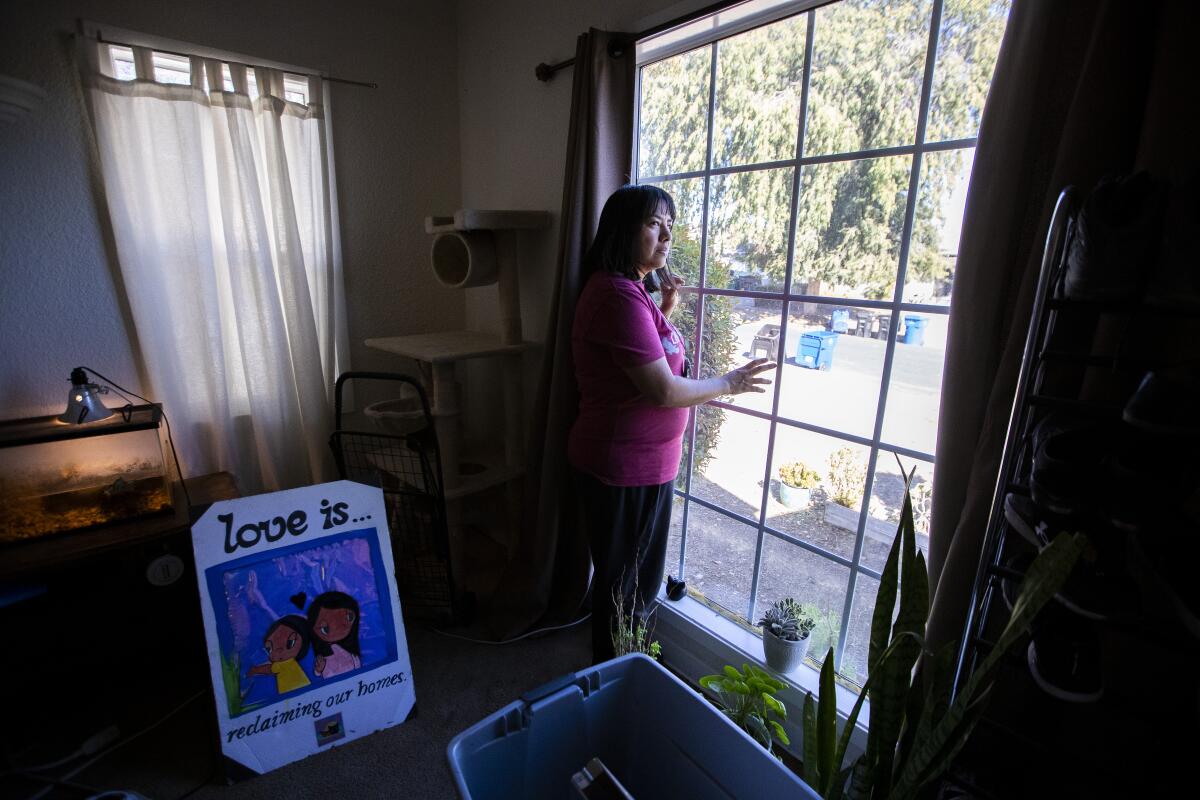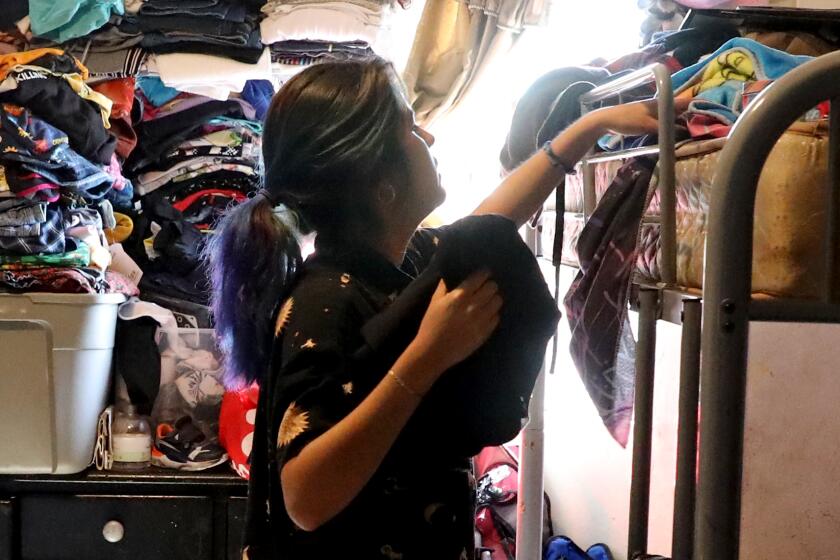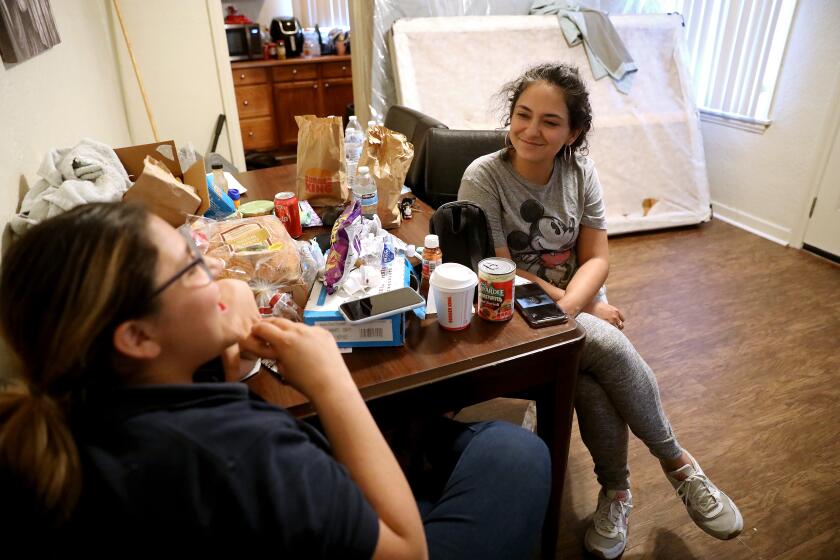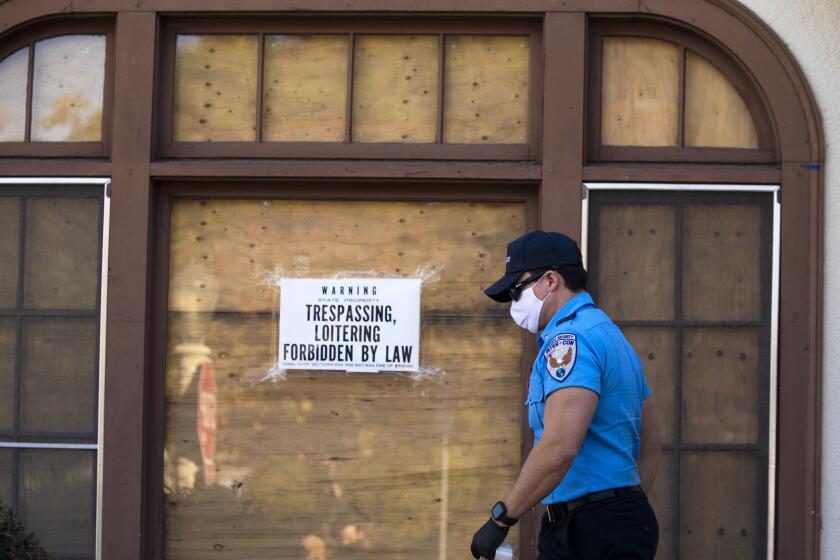They seized vacant El Sereno homes at the start of the pandemic. Now, they face eviction

- Share via
At the start of the COVID-19 pandemic in March 2020, more than a dozen families that were homeless or at risk of losing housing seized vacant, publicly owned homes in El Sereno, an action they said was driven by the astronomical costs of living in Los Angeles and the need to shelter from the virus.
Some have remained, taking advantage of a deal that allowed them to stay legally in single-family bungalows owned by the state. Families have planted gardens outside the homes and sent their children to neighborhood schools.
But now, nearly three years later, their leases are expiring, and they aren’t allowed to renew them. A standoff is emerging between public officials eager for the families to move out and some families that don’t want to.
“For right now, I’m planning to stay,” said Martha Escudero, 44, a mother of two who was one of the first to take over a house in the neighborhood. “I don’t see any other option.”
More homes are overcrowded in L.A. than in any other large U.S. county, a Times analysis of census data found — a situation that has endured for three decades.
It’s the latest dispute in a long struggle over the homes that started in the 1960s, when the California Department of Transportation began purchasing hundreds of properties in El Sereno and neighboring communities to prepare for an expansion of the 710 Freeway. After decades of fighting, Caltrans abandoned the freeway plans in 2018.
All the while, the Caltrans-owned homes festered under the cloud of potential demolition. Some had been left vacant and rotting, with faulty wiring and leaky roofs.
But with persistently high homelessness, overcrowding and ceaseless rising rents in the L.A. area, the families and activists who support them decided to make a statement: There should be no vacant, publicly owned homes during a housing crisis.
In a series of coordinated actions in March 2020, they seized 13 of the homes. Among those who took over properties: a family of five that had been crowding into a 350-square-foot apartment in Westlake, a welder near retirement age who had been living in his van, and Escudero and her daughters, who had been couch-surfing in Boyle Heights.
Caltrans had contended that the homes were unsafe and uninhabitable. But the agency agreed to make repairs and lease more than two dozen of them to the Housing Authority of the City of Los Angeles so they could be used as temporary housing. Families that had seized homes could stay while they looked for permanent places to live.
Stuck in an overcrowded apartment in one of L.A.’s most packed neighborhoods, Ruby Gordillo seized a vacant, state-owned home for her family. They may be forced to leave soon.
Eight families signed leases for the homes in the fall of 2020, agreeing to work with the agencies to find new housing and leave the properties after two years.
The circumstances inspired others to seek the same accommodations. The night before Thanksgiving in 2020, another set of activists attempted to take over more state-owned, vacant homes in El Sereno, using bolt cutters to break into the properties. Police pulled them out the same night in a confrontation that led to 62 arrests.
Many El Sereno residents have remained wary of the constant activity in the neighborhood and have urged the state and the city of Los Angeles to move forward with plans to redevelop the properties into long-term affordable housing, parks and other amenities.
The two-year leases signed by the eight families are now ending. Two have left the homes and moved into permanent housing elsewhere, according to Tina Booth, director of asset management with the Housing Authority. But half a dozen remain. Escudero and another tenant’s time is up this week; the others’ deadlines are in November.
Booth said the terms of the leases with both Caltrans and the families were clear from the beginning, and the two-year limit cannot be extended.
“These homes were never intended to be a permanent housing solution,” Booth said. “We don’t have the legal right to convert them into something that they’re not.”
The families, she said, have been offered alternative places to live throughout the last two years and have received supportive services.
“We recognize that people want to stay,” Booth said. “It’s just simply not an option that we have and we can offer at this time.”
The poor condition of the Caltrans-owned homes is no deterrent to families pummeled by the pandemic and affordability crisis.
Escudero said none of the options suggested by the Housing Authority would benefit her family; they were apartments smaller than the single-family home she’s in now. Some were in Inglewood or the San Fernando Valley, more than 20 miles from El Sereno, she said. The distance would make it hard to maintain community ties, including with the school her 10-year-old daughter attends, which is a short walk from the El Sereno home.
“The help they’re giving is not so much help,” Escudero said. “As soon as you move into this house, they’re trying to push you out. Once you establish community and home, they should just let you stay there.”
Booth said the Housing Authority this week plans to issue formal eviction notices, a precursor to filing an eviction lawsuit, to the households whose leases have expired. Booth said the agency does not plan to force the families out immediately, but the notices will begin a monthlong final effort to find them alternative housing.
More to Read
Sign up for Essential California
The most important California stories and recommendations in your inbox every morning.
You may occasionally receive promotional content from the Los Angeles Times.










